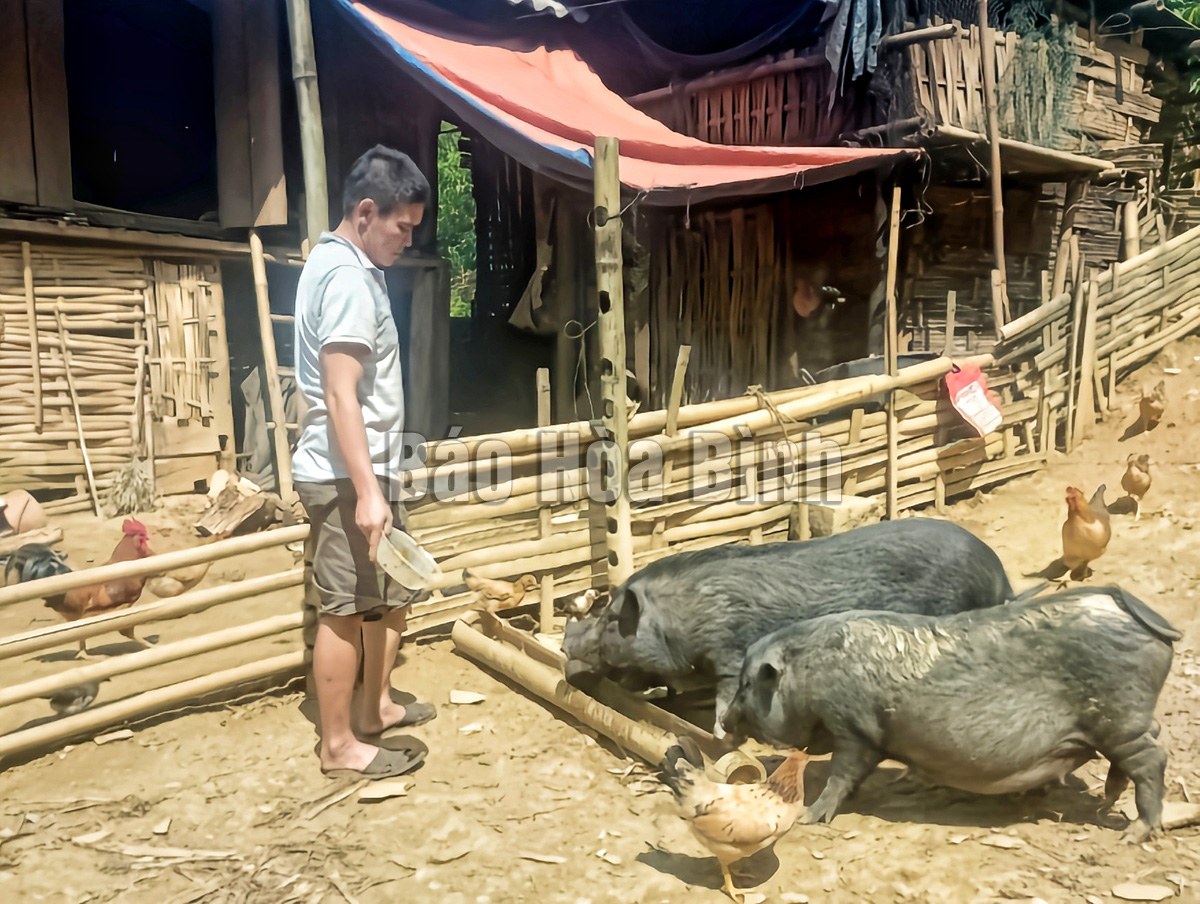
(HBO) - In recent years, farmers in Ngo Luong commune, Tan Lac district, have focused on raising animals native to the land, hence the formation of products imbued with the local identity, serving the future growth of tourism.

Bui Van Inh's family in Bo Tram hamlet, Ngo Luong,
develops indigenous pig breeding, reaping positive economic outcomes.
Ngo Luong is a difficult mountainous commune lying 30 km
away from the district’s centre. It houses four hamlets with 351 households
grouping 1,650 people. The local rates of poor and near-poor households in the
locality now stood at 24.29% and nearly 29%, respectively. Despite its
difficulties, Ngo Luong is a land of potential and advantages with high forest
coverage, a fresh climate, and a natural landscape that still retains many wild
features.
Bui Van Thai, Vice Chairman of the Ngo Luong People's
Committee said the locals raise cattle and poultry. As for their pig herd,
there are currently over 1,200 heads, about 70% of which are native black pigs.
Raising indigenous black pigs is suitable for local conditions and enjoys
favorable prices and output despite falling prices in the market. Therefore,
many households involved have seen their incomes improve.
Currently, 200 local households are joining the farming of
the black pigs. Bui Van Hung in Bo Tram hamlet runs a herd of 100 pig heads
reared in a one-ha area. Hung said the locality houses grazing grounds and
abundant food sources, suitable for raising the black pigs. Moreover, the
animal’s output is quite stable, with its current price being about 120,000 VND
(5.12 USD) per kg.
In the 2023 – 2025 period, livestock development in Ngo
Luong is set to receive regular support from the sub-department of livestock
and veterinary medicine regarding vaccination work and technical training. The
assistance is expected to help control diseases and create products with strong
local identity, attracting tourists and accelerating the process of hunger
eradication and poverty alleviation./.
Since the beginning of this year, under the direction of the Department of Agriculture and Environment, the Sub-Department of Agricultural, Forestry, and Fishery Product Quality Management has strengthened the integration of the professional activities to promote and guide the organizations and individuals in the production and trading of agricultural, forestry, and fishery products to comply with the legal regulations regarding the use of chemicals, pesticides and veterinary medicines in crop cultivation, livestock farming and aquaculture. They also provide guidance to processing and manufacturing establishments on keeping the records to trace the product origins and using food additives from the approved list according to the regulations.
Hoa Binh province saw a significant rise in state budget revenue in the first two months of 2025, heard a meeting chaired by Vice Chairman of the provincial People’s Committee Quach Tat Liem.
Ha Thi Ha Chi, a 26-year-old graduate in law, has taken an unconventional path by returning to her hometown in Mai Chau district to establish the Tong Dau Cooperative, creating stable jobs for local women and bringing Thai ethnic brocade weaving to the global market.
As the Lunar New Year 2025 approached, pork prices surged, creating a profitable season for farmers in Tan Vinh commune, Luong Son district. Taking advantage of the rising demand, Can Minh Son, a farmer from Coi hamlet, sold over 30 pigs at 69,000 VND/kg, each weighing more than 100 kg. After deducting expenses, his family earned a profit of over 50 million VND.
alternate member of the Central Party Committee, Secretary of the Hoa Binh provincial Party Committee Nguyen Phi Long on March 5 had a working session with Yan Jiehe, Founder and Chairman of the China Pacific Construction Group, one of China's largest private corporations in the field of transport infrastructure. Deputy Secretary of the provincial Party Committee, Chairman of the provincial People's Committee Bui Duc Hinh and leaders of provincial departments and sectors also attended the working session.
The electronic printed circuit board (PCB) manufacturing and processing plant of Japan’s Meiko Group, located at Da River Left Bank Industrial Park in Hoa Binh city with a total investment of over 200 million USD, is expected to create thousands of jobs and make a significant contribution to the local budget.



